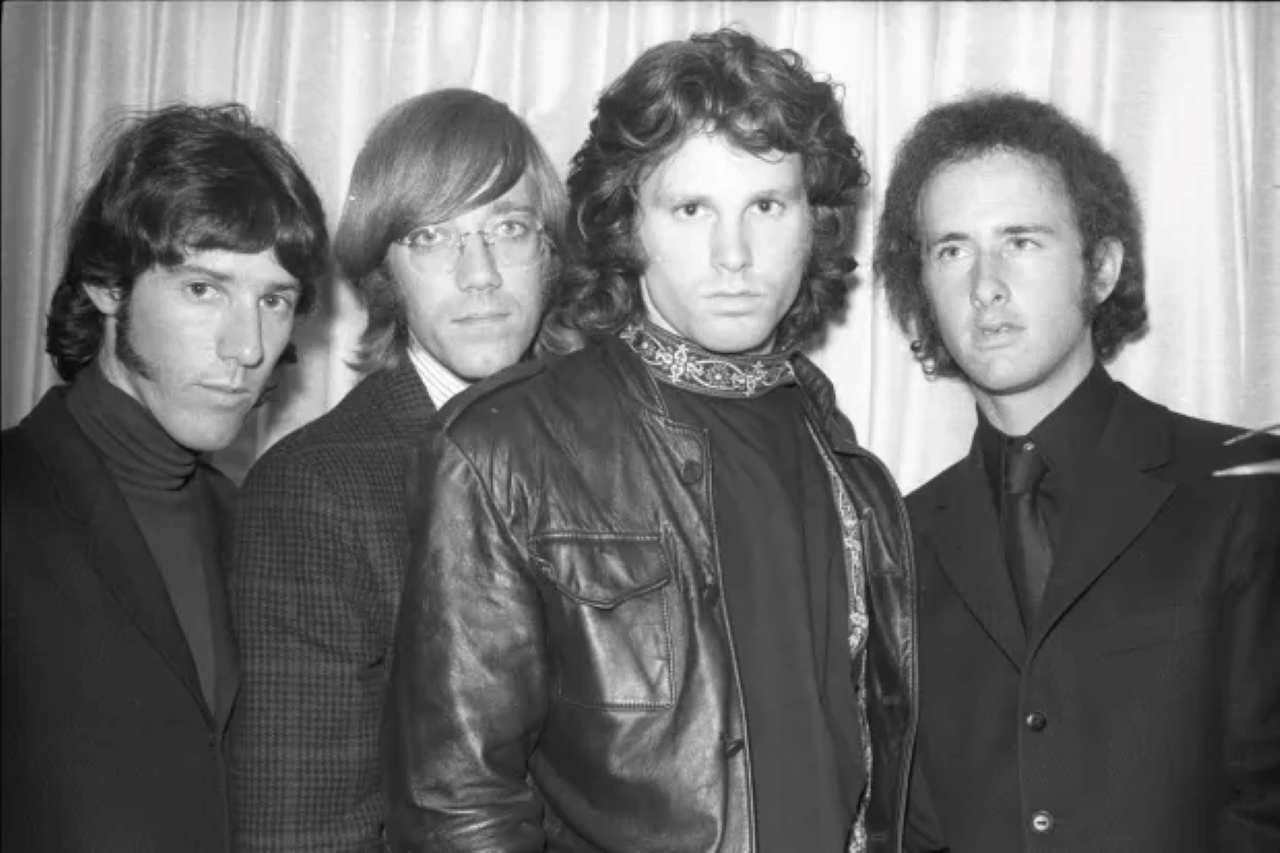🔥 “This is the end… beautiful friend” – A Whisper from the Abyss
The first time Jim Morrison murmured those opening words in “The End,” it wasn’t just the end of a love story. It felt like the end of sanity, the end of innocence, and for many, the end of any clean line between life and death, light and darkness.
Originally written as a poetic goodbye to his girlfriend Mary Werbelow, “The End” grew into something far deeper and far more disturbing. By the time it was recorded for The Doors’ 1967 debut album, it had mutated into an 11-minute fever dream—a journey through Oedipal rage, spiritual disintegration, and existential horror. What began as a break-up song ended up being a break in the psyche.
👁️ The Oedipal Nightmare and Censorship Battles
Midway through the song, Morrison plunges into an improvised monologue: “Father… I want to kill you. Mother… I want to f*** you.” These were words never before heard in rock music, not even whispered. Elektra producer Paul Rothchild initially wanted to cut the passage—but Morrison insisted. He didn’t just want to provoke—he wanted to exorcise.
It was theater, myth, and trauma entwined. The Oedipal allusion was obvious. But for Morrison, this wasn’t just Freud—it was personal. His relationship with his father, Admiral George Stephen Morrison, had deteriorated into silence. They didn’t speak for years. In official Navy documents, his father listed Jim as “deceased.”
The pain wasn’t poetic license. It was a public dissection of unresolved trauma—played nightly to a crowd of thousands.
⚓ The Admiral and the Rock Star – A Chasm Between Worlds
Jim Morrison was born into discipline, order, and tradition. His father, a high-ranking Navy officer, embodied everything Jim would later reject. Structure. Conformity. Authority. While his father navigated battleships, Jim drifted through poetry, rebellion, and acid-fueled visions.
Their bond fractured irreparably in Morrison’s teenage years. When Jim chose to pursue film and poetry, his father mocked his ambitions. The last letter George Morrison sent to his son dismissed his creative path and urged him to find “something more practical.”
Years later, Jim would fabricate his family history in interviews, claiming his parents were dead or that he was an orphan. For the Lizard King to rise, James Douglas Morrison had to kill the boy his father raised.
🔥 Live on Stage: Madness or Catharsis?
When The Doors performed “The End” live, it was often the climax of chaos. At the Whisky a Go Go in 1966, Morrison’s improvised Oedipal section shocked the audience so much, the band was fired the next day. Yet it also marked the moment they got noticed—and signed.
By the time of the band’s residency at The Fillmore or shows in Europe, “The End” became an emotional exorcism. Jim, often intoxicated, would sink into trance-like states, delivering the song as if in séance. Sometimes it ended with him collapsing. Other times, with the audience in stunned silence.
Critics called it pretentious. Fans called it spiritual. For Jim, it was both: therapy and performance. The stage became a battlefield where he could scream into the void the things he couldn’t say to his father.
🌀 Apocalypse Now and the Sound of Madness
In 1979, Francis Ford Coppola chose “The End” to open Apocalypse Now. As helicopters flew over Vietnam and napalm lit the jungle, Morrison’s voice crept in like a ghost.
It was a perfect fit. The madness of war. The descent into darkness. The crumbling of Western rationality. Jim Morrison had never served in Vietnam—but his voice became its haunting soundtrack.
The use of “The End” in that film brought the song full circle. Admiral George Morrison had commanded the U.S. fleet during the Gulf of Tonkin incident—an event that escalated American involvement in the war. His son, the rebellious poet, now framed that war’s cinematic depiction in chilling poetry. The son scored the chaos the father helped unleash.
🪦 The Final Goodbye – Regret After Silence
When Jim Morrison died in 1971 in Paris, his father never made a public statement. But in a 2005 interview—decades later—George Morrison admitted regret. He said he had been “very proud” of Jim’s achievements, and that their estrangement was something he wished had been resolved.
Too late.
Jim had been buried in Père Lachaise Cemetery, among the poets he admired—Oscar Wilde, Baudelaire, and Proust. His grave became a pilgrimage site, covered in candles, graffiti, and heartbreak.
And “The End” played on—forever frozen in time as Morrison’s descent, confession, and legacy.
🖤 What Makes It the Most Haunting?
It’s not just the length, the eerie sitar-infused guitar work, or the slow-burning structure. “The End” is haunting because it’s honest. Too honest.
It’s a man confronting the darkest impulses inside him. A man screaming into the void about abandonment, longing, fear, rage, and identity. It’s rock not as entertainment, but as ritual—a purging of demons.
And in doing so, Jim Morrison left behind one of the most unsettling, unforgettable songs in music history.
